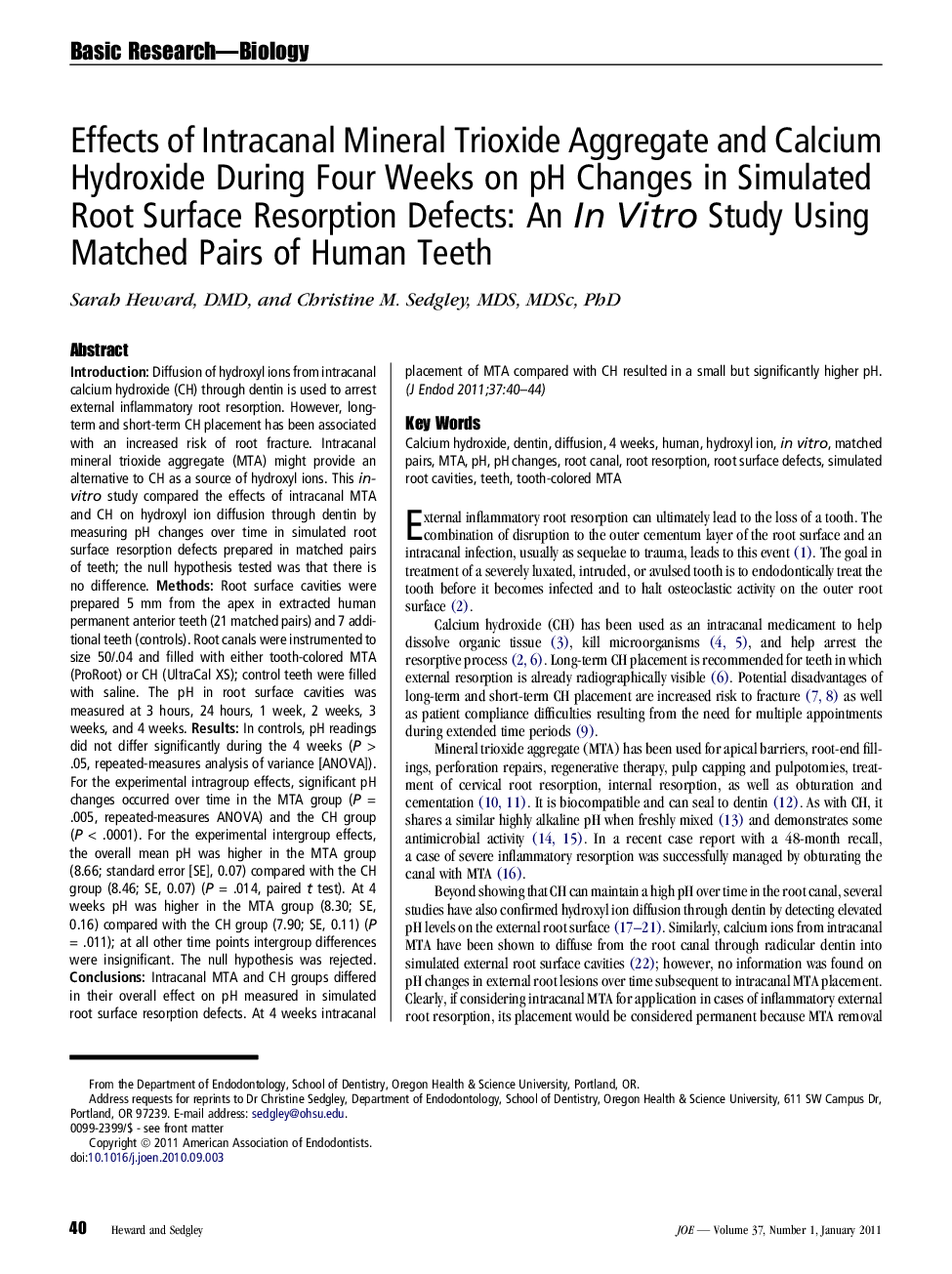| Article ID | Journal | Published Year | Pages | File Type |
|---|---|---|---|---|
| 3147116 | Journal of Endodontics | 2011 | 5 Pages |
IntroductionDiffusion of hydroxyl ions from intracanal calcium hydroxide (CH) through dentin is used to arrest external inflammatory root resorption. However, long-term and short-term CH placement has been associated with an increased risk of root fracture. Intracanal mineral trioxide aggregate (MTA) might provide an alternative to CH as a source of hydroxyl ions. This in vitro study compared the effects of intracanal MTA and CH on hydroxyl ion diffusion through dentin by measuring pH changes over time in simulated root surface resorption defects prepared in matched pairs of teeth; the null hypothesis tested was that there is no difference.MethodsRoot surface cavities were prepared 5 mm from the apex in extracted human permanent anterior teeth (21 matched pairs) and 7 additional teeth (controls). Root canals were instrumented to size 50/.04 and filled with either tooth-colored MTA (ProRoot) or CH (UltraCal XS); control teeth were filled with saline. The pH in root surface cavities was measured at 3 hours, 24 hours, 1 week, 2 weeks, 3 weeks, and 4 weeks.ResultsIn controls, pH readings did not differ significantly during the 4 weeks (P > .05, repeated-measures analysis of variance [ANOVA]). For the experimental intragroup effects, significant pH changes occurred over time in the MTA group (P = .005, repeated-measures ANOVA) and the CH group (P < .0001). For the experimental intergroup effects, the overall mean pH was higher in the MTA group (8.66; standard error [SE], 0.07) compared with the CH group (8.46; SE, 0.07) (P = .014, paired t test). At 4 weeks pH was higher in the MTA group (8.30; SE, 0.16) compared with the CH group (7.90; SE, 0.11) (P = .011); at all other time points intergroup differences were insignificant. The null hypothesis was rejected.ConclusionsIntracanal MTA and CH groups differed in their overall effect on pH measured in simulated root surface resorption defects. At 4 weeks intracanal placement of MTA compared with CH resulted in a small but significantly higher pH.
